3 Steps To Optimize Your Accounting Firm’s Workflows (and 4 major benefits)
Author: Financial Cents

In this article
As a small accounting firm, you may have discovered that workflow checklists help you delegate work and streamline your firm.
But are you using your workflow checklists to their fullest potential? Have you optimized your workflow checklists so you can delegate work to your team and ensure consistent, high-quality client deliverables without you being involved?
At Financial Cents, we want to see accounting firms succeed!
That’s why we’ve written this article – to help you optimize your current accounting workflow.
You can read through the whole article or click on any topic on the table of contents that you’d like to jump to. Let’s get started!
What Does It Mean to Optimize an Accounting Workflow?
![3 Steps To Optimize Your Accounting Firm'S Workflows [&Amp; 4 Major Benefits] 5](https://financial-cents.com/wp-content/uploads/2022/05/Icon-1-768x593.png)
You have hundreds of small tasks to manage at your firm. You need to receive specific information from your clients and complete accounting tasks, and if anything falls through the cracks, the consequences are dire!
Not only will you lose clients, but your firm and employees will suffer.
When you were starting out, you had a lot of information in your head and maintained consistent client deliverables due to your hard work. But as you scaled and added new employees, this became harder.
That’s why you need accounting workflow checklists, which have all the steps in the process written out for your employees to follow.
However, even with a checklist, your employees still rely on you to get a lot of info about how to complete each step in the process correctly.
To optimize your checklist, you need to go beyond just listing the steps. You also need to provide information on how to complete each step.
![3 Steps To Optimize Your Accounting Firm'S Workflows [&Amp; 4 Major Benefits] 6](https://financial-cents.com/wp-content/uploads/2022/05/accounting-workflow-checklist-provide-information-on-how-to-complete-tasks-1024x731.jpg)
When your checklist is optimized, it contains all the information your employees need to know to complete the workflow. This way, you can delegate the task to a team member, and they can complete it without you while still ensuring consistent client deliverables.
This frees up valuable time for you, so you can effectively scale your firm.
4 Benefits of Optimizing Your Accounting Workflows
![3 Steps To Optimize Your Accounting Firm'S Workflows [&Amp; 4 Major Benefits] 8](https://financial-cents.com/wp-content/uploads/2022/05/Icon-2-768x593.png)
Not only is this a lot of pressure, but it also makes it nearly impossible to scale. There’s only so much of you to go around! At a certain point, things get overlooked, and the quality of work deteriorates.
If you’re not careful, all this pressure might lead to burnout. And if you burn out, you let down all your clients and your employees.
That’s why it’s so crucial to optimize your accounting workflows!
Ultimately, there are four key benefits to optimizing your accounting workflows.
Benefit 1: Ability to effectively delegate work
The pressure is on you, the owner, to make sure work gets completed correctly.
But unfortunately, there is only one of you.
As your firm grows, you’ll need to delegate more and more work. But this is difficult for a few reasons:
- Any shoddy work reflects negatively on your firm.
- You have a lot of knowledge in your head that your staff doesn’t know as readily as you do.
- Your staff comes to you first if they have questions, interrupting your time. Because of this, it might seem easier to work overtime and do it yourself.

An optimized checklist helps you delegate work in several key ways:
- It gives you confidence that the delegated work will be done correctly and reflect positively on your firm.
- It transfers the knowledge in your head into a list that your employees can access at any time, so they never have to wonder what they should do next.
- Your employees can then refer to this list if they have questions instead of spending hours figuring it out for themselves or taking up your time by asking you.
Benefit 2: Allows your firm to run without you
If you are developing optimized workflow checklists that allow you to delegate appropriately, your firm will be able to run without you, at least for short periods.
This is crucial to scaling your firm.
Why?
If your firm can run without you, you’ll be able to:
- Focus on growing your business
- Take a vacation so you don’t burn out
- Spend more time with your loved ones
- Properly take care of your health
- Take on more clients

You can only take on so many clients if you do everything yourself. Your load never lightens, and you are headed for burnout.
But with effective delegation, you can scale to infinity.
Benefit 3: Improves work quality
It’s not enough to delegate responsibilities and take on new clients. It’s also essential to keep the clients you already have. After all, according to the Harvard Business Review, “acquiring a new customer is anywhere from five to 25 times more expensive than retaining an existing one.”
And how do you retain your existing clients?
By providing consistent, high-quality deliverables.
As you scale your firm and delegate more work, it’s easy for things to fall through the cracks as your employees scramble to figure out what they’re doing.
What’s your job in all this?
To eliminate that scramble by providing your employees with:
- A checklist that tells them what they’re supposed to do next
- Checklist optimization that gives them detailed explanations of how to do the task, as well as all the tools they need to complete it properly
Your employees will appreciate the clarity of their tasks, and your clients will appreciate the consistent, high-quality work your firm produces.
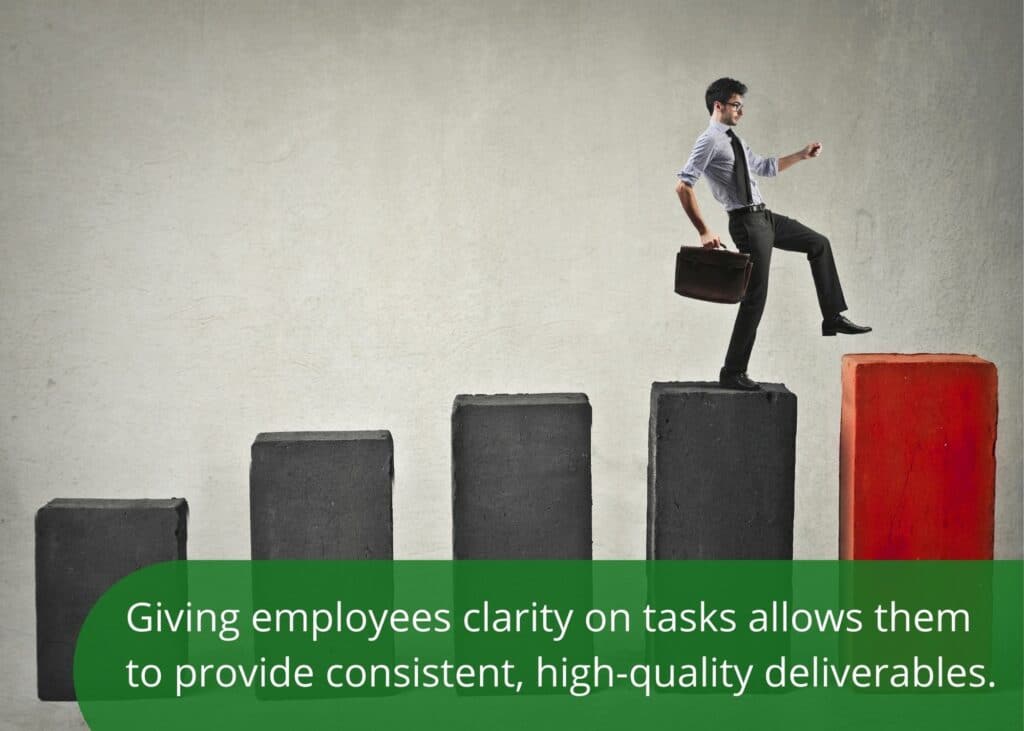
Benefit 4: Boosts productivity
You know what wastes a lot of time?
Guesswork, Mistakes and Rework.
Unclear expectations leave your employees scrambling to fill in the blanks. How should they word this email? How should they perform this task? Is it worth asking the boss about, or should they just continue trying to figure it out?
These unclear expectations ultimately hurt your firm in several ways:
- Even though your team is smart enough to figure some things out on their own, it takes a lot more time than simply following an optimized workflow checklist
- Unclear expectations lead to mistakes, rework and wasted time
- Since your team can’t read your mind, unclear expectations ultimately lead to things falling through the cracks
- When things slip through the cracks, your clients begin to distrust you
The best way to solve this?
Eliminate the guesswork. Fully optimize your checklists. Your team will be able to perform every step in a task in the most productive way possible, and your firm’s output will be higher.
![3 Steps To Optimize Your Accounting Firm'S Workflows [&Amp; 4 Major Benefits] 9](https://financial-cents.com/wp-content/uploads/2022/05/Benefits-of-optimizing-accounting-workflows-1024x731.jpg)
3 Steps to Building a Bulletproof Accounting Workflow Checklist
![3 Steps To Optimize Your Accounting Firm'S Workflows [&Amp; 4 Major Benefits] 10](https://financial-cents.com/wp-content/uploads/2022/05/Icon-3-768x593.png)
Okay, you get it. You need to optimize your accounting workflow checklists.
But how?
Follow along as we teach you the three steps to optimizing your accounting workflow checklists. Get ready to revolutionize the way your team does work, and scale your firm to infinity!
Step 1: Review and update your existing workflow checklists
The first step to optimizing your accounting workflow checklists is to look at what you already have.
Ask yourself:
- What checklists are we currently using?
- Do we have a proper checklist for every workflow?
- How long has it been since we’ve updated our checklists?
- Is it clear how to complete each step of the checklist?
- Are we missing steps or parts of the processes?
- Are we using a workflow management software to manage our workflow checklists?
It’s crucial to update your checklists because as time passes and your firm grows more complex, your processes change, and your checklists should reflect that. Make sure your checklists are completely up-to-date with the way your firm is currently handling the tasks.
If you discover that you don’t have checklists for every process, don’t worry, we’ve got you!
We offer free workflow checklist templates. There is no need to re-invent the wheel—just download our templates and update them to suit your specific processes.
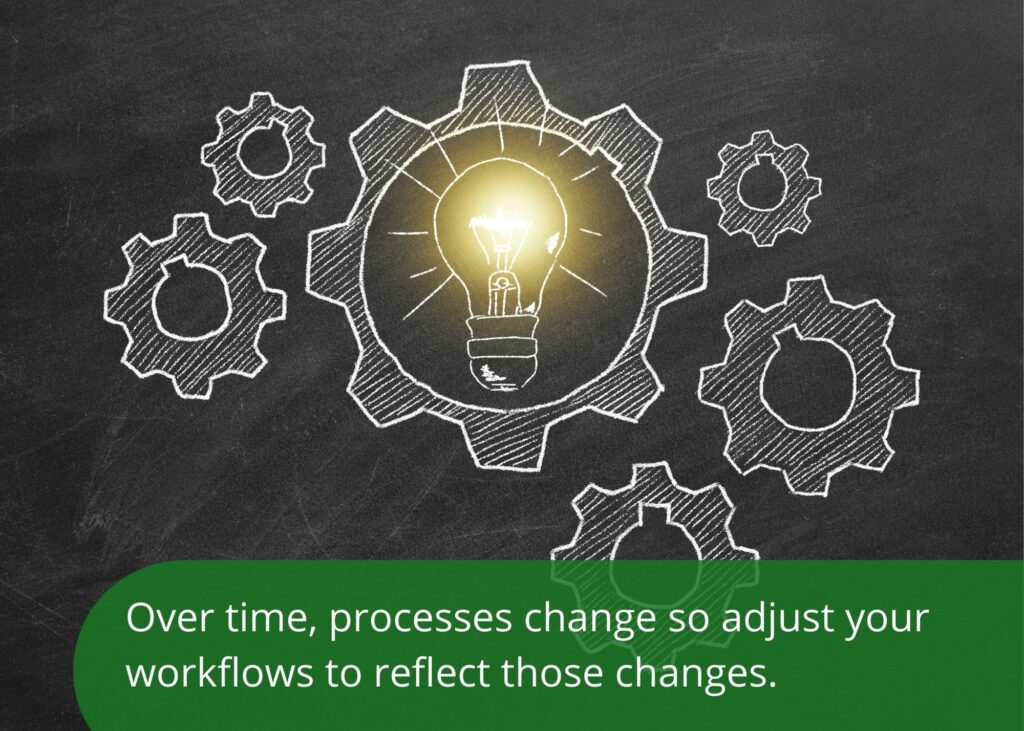
Step 2: Create walkthrough videos for each step in the process
One of the pivotal steps you have to take before you can scale your accounting firm is to document your accounting workflow with videos.
Why?
As we discussed earlier, to scale your firm, you have to be able to effectively delegate your work to your team.
Many accounting firms write out their processes in Word documents, but this is inefficient. It takes an enormous amount of time to write out every step, and it can be confusing for the employee. Furthermore, it’s easy to forget something.
On the other hand, videos not only show your employees each step instead of trying to explain it to them, but they also don’t take up any extra time on your end.
Just record yourself as you do the work.
A video is more detailed and easier to digest than a word document. You can also be confident that you’re documenting every step, since the video records every button you click and every page you view.
When making a walkthrough video, the first step is to choose an easy-to-use video recording platform. We like to use Loom. Loom is a great video recording platform that makes it easy to record your screen.
Loom videos are also easy to share. Simply paste the link into your workflow to give your team easy access.
The next step to creating a walkthrough video is to narrate the video as you’re doing the work. As you complete the process, narrate each step, making sure to note things like:
- Why each step is important.
- Things to look for and information to notice.
- What data you’re looking for, and how to analyze it.

This gives your team extra context to get the work done quickly and efficiently.
Don’t worry about trying to create a perfect video. You’re not presenting this to the world, just your team, and constant re-recording wastes time. If you make a mistake, just record yourself making the necessary correction.
You can also pause loom videos if you need to stop and figure something out, or if you get interrupted.
With this walkthrough video linked in the checklist, your team can efficiently complete projects without your help since they can refer back to the video if they are uncertain about any steps.
Step 3: Add in additional information to help your team complete the steps
For every step in your checklist, you should optimize it by adding details. Anything your employee needs to know to complete the task should be readily available.
For instance, if the first step in a task is to “request bank, credit card, and loan statements,” your employee needs access to your client’s name, email, and phone number. If you want them to use a specific email template, they’ll need that as well. Finally, they’ll need any detailed information about the process, such as how long to follow up between emails.
As another example, if a step in a task requires your employee to publish all receipts to a receipt app, they’ll need to know the app’s name, the link, and the username and password information.
You’ll find that some tasks require sub-tasks.
And finally, you’ll want to add links to the walkthrough videos you created.
This information should be accessible from one location. You don’t want your employees wasting time by trying to grab information from multiple places.
It may seem like a lot of bother to optimize checklists in this manner, but trust us, you’ll get your time back tenfold when you delegate tasks and never have to worry about them again.
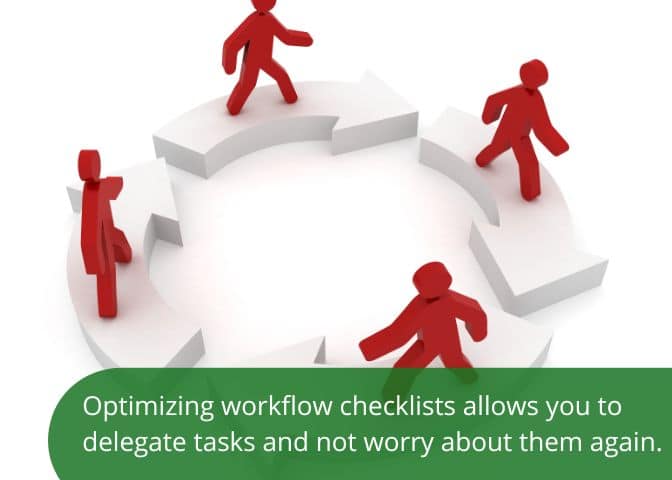
Bonus tip: Continue to update your workflows regularly
Your firm’s workflows and operations change as your business grows and becomes more complex. In order to keep your firm running as efficiently as possible, make sure you revisit your checklists now and then to keep them current.
How Financial Cents Can Help
![3 Steps To Optimize Your Accounting Firm'S Workflows [&Amp; 4 Major Benefits] 11](https://financial-cents.com/wp-content/uploads/2022/05/Icon-4-1-768x593.png)
By optimizing your accounting workflows, you will be able to reap the benefits of a well-oiled machine as you delegate work, improve the overall quality of your work, and scale your firm.
You can create optimized accounting checklists using Excel spreadsheets. But when it comes to collaborating with your team, sharing checklists, and tracking the status of work, Excel spreadsheets are not practical, you need an easy to use accounting workflow software.
That’s why we built Financial Cents.
Financial Cents allows you to easily build and store your optimized checklists all in one place. As your team clicks into a task, they can select a step and easily see all the information they need in the description.
They’ll also be able to see sub-tasks, links to the walkthrough videos, and any other documents they may need.
Your employees will require access to a lot of sensitive client info, such as usernames and passwords.
That’s why, at Financial Cents, we created encrypted client profiles. We store all client info in one place so your team can easily find it. This includes the “client vault,” where passwords, usernames, and security questions for all your clients apps can be stored.
This allows your team can easily find the information they need to get the work done while ensuring that you’re protecting your client’s sensitive information.
With Financial Cents, you can create optimized checklists, delegate work, and track the status of work all in one place. In this way, you ensure that nothing slips through the cracks and you’re delivering consistent quality work every time
![3 Steps To Optimize Your Accounting Firm'S Workflows [&Amp; 4 Major Benefits] 12](https://financial-cents.com/wp-content/uploads/2022/05/Create-optimized-checklists-and-delegate-work-in-one-location.jpg)
For more information on how the right software can help you optimize checklists, read our related blog post: The Best Accounting Practice Management Software options.
As we’ve explored in this article, optimizing your accounting workflow checklists is the best way to scale your firm while still producing high-quality, on-time deliverables.
And at Financial Cents, we’ve created software to help you do just that!
Watch our four-minute demo video to get an idea of what we do and how we can help you optimize your checklists.
Then, start your free trial today and experience the convenience of Financial Cents software for yourself.
We can’t wait to work with you!
Instantly download this blog article as a PDF
Download free workflow templates
Get all the checklist templates you need to streamline and scale your accounting firm!
Subscribe to Newsletter
We're talking high-value articles, expert interviews, actionable guides, and events.
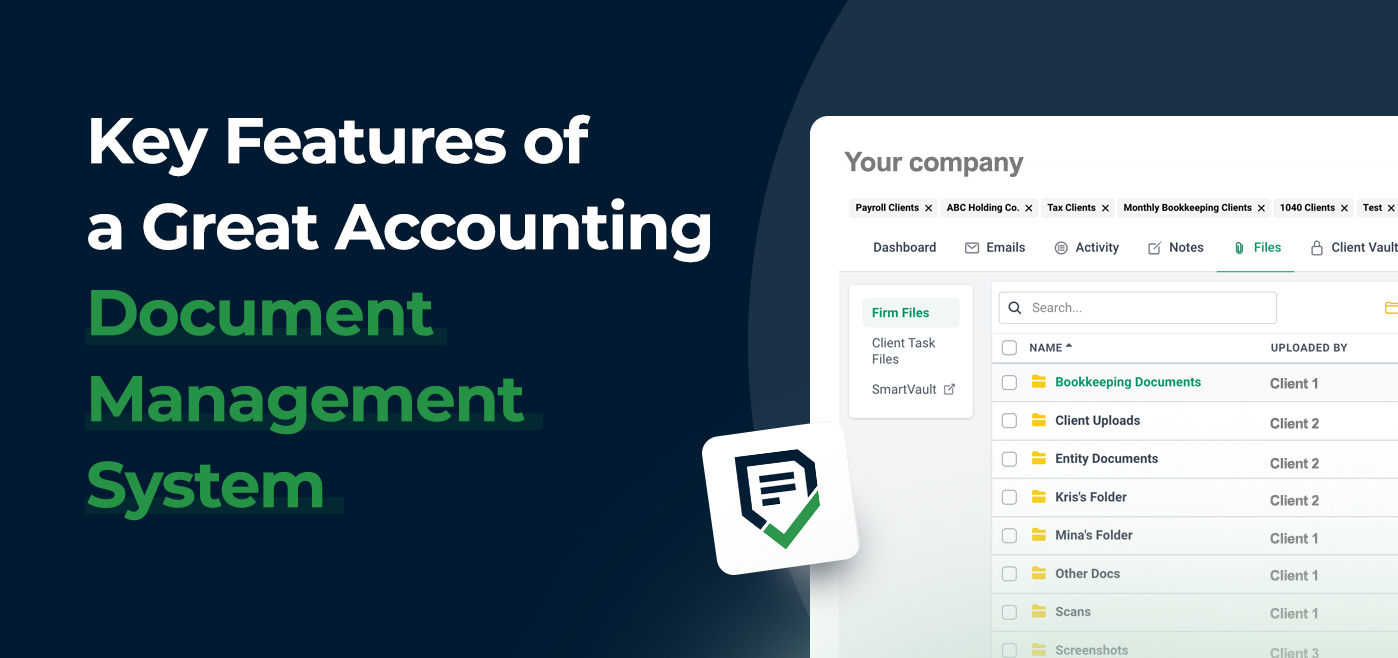
Key Features of a Great Accounting Document Management System
Here’s all you need to know about an accounting document management system and how it can make you more organized and save…
Apr 26, 2024
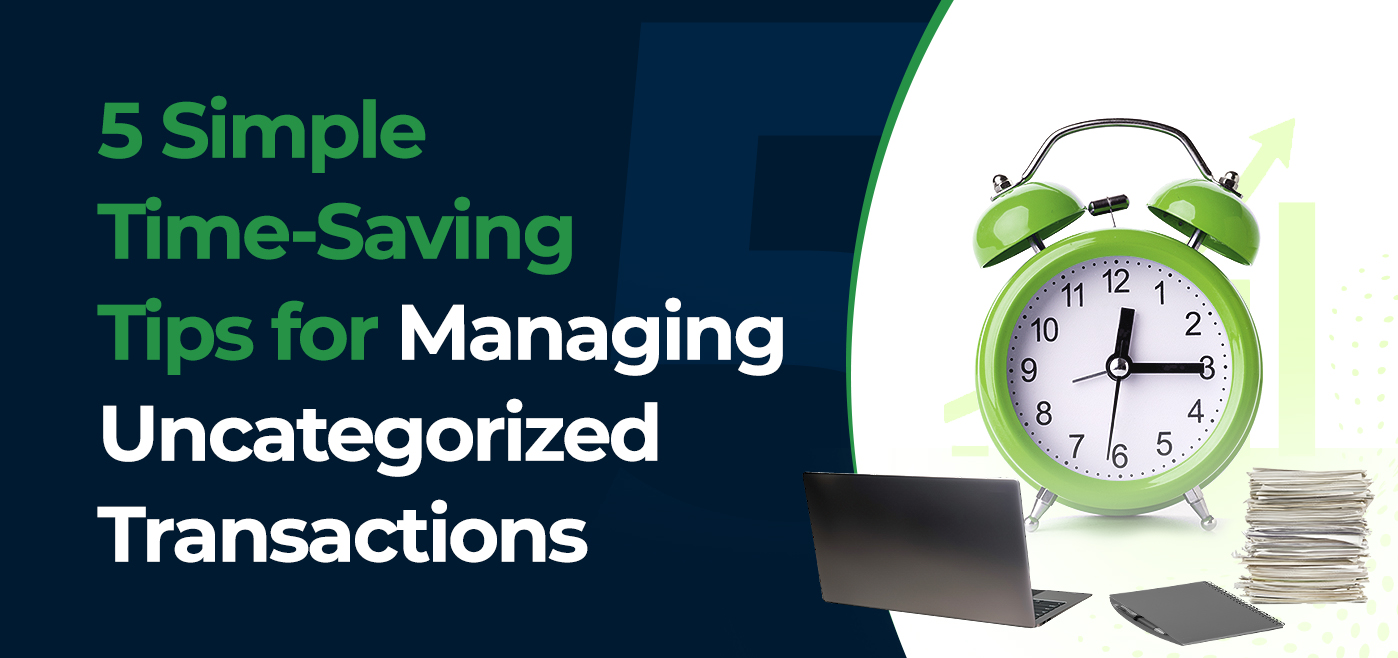
5 Simple Time-Saving Tips for Managing Uncategorized Transactions
Manually resolving multiple uncategorized transactions steals valuable time from accountants and bookkeepers. But there’s a solution. Here are five simple, time-saving tips…
Apr 24, 2024